Trying! Swift Community in 2024

はじめに
こんにちは!iOSエンジニアのViacheslav Voronaです。チームメンバーと一緒に今年開催のtry! Swift Tokyoに参加したことで、Swiftコミュニティ全体の動向について考えることができました。かなり新しいものもあれば、前々からあったけれど最近になって進化したものもあり、本記事では私の所感を皆さんにお伝えします。
見て見ぬふりはできない話題...
まずは避けて通れないこの話題から。待望のApple Vision Proが発売されたのは、try! Swift開催のおよそ2ヵ月前でした。try! Swiftの会場がAppleファンで溢れていたのにも納得いきます。Apple Vision Proをまだ試着したことの無い人たちは、「数分だけでも装着してみたい!」と、そのチャンスを切望していました。
Satoshi Hattori氏による「SwiftでvisionOSのアプリをつくろう」の会場は満席でした。アプリ自体は、ユーザーの仮想空間に円形のタイマーを浮かべるだけのシンプルなものでしたが、服部さんが実際にヘッドセットを装着し、リアルタイムでワークの結果を見せ始めると、会場は大きく盛り上がりました。
また、本カンファレンスの2日目には空間コンピューティングのファンたちが小さな非公式ミーティングを開いていました。Appleの他のデバイスとは異なり、Vision ProはSwiftコミュニティ内で、独自のサブコミュニティを形成しています。映画で近未来的な仮想デバイスを見て育った人たちは、サイバーパンクの夢に近づいていることを実感し始めているのです。エキサイティングである反面、人によっては脅威に感じるかもしれません。
そしてもちろん、カンファレンスのオープニングでの「Swift Punk」のパフォーマンスもVision Proにインスパイアされたものだということは忘れずに触れておきます。
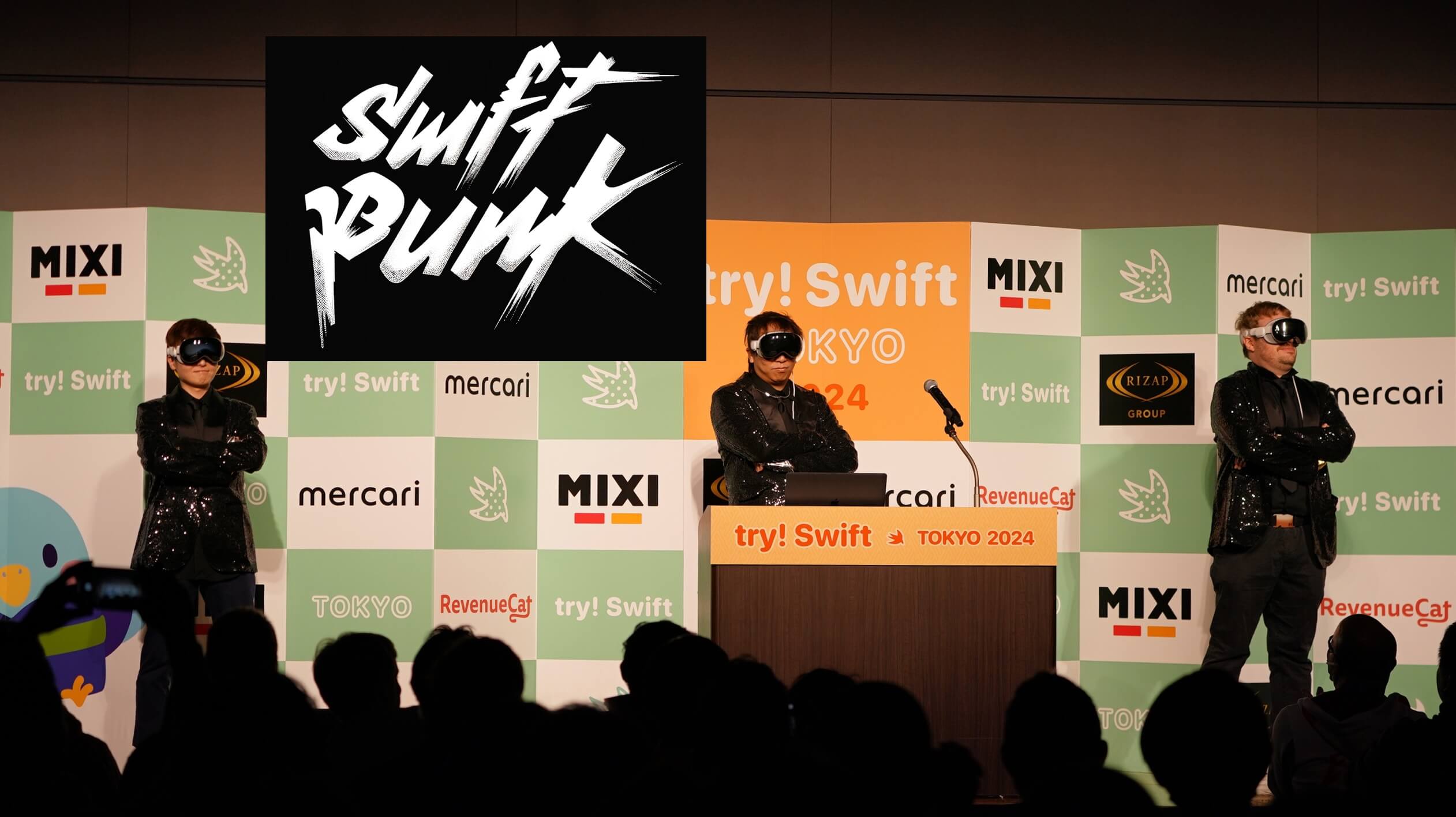
$10000+の小道具で行われたオープニングパフォーマンス
Swiftの新境地
最先端のトレンドではなくても、最近は多方面において興味深い開発が進められています。つまり、Swiftコミュニティが、Appleデバイスの領域を超えてさらに拡大しようとしているということです。
サーバーサイドSwiftなどは以前から存在しています。Vaporは2016年にリリースされ、広く採用されたわけではないですが、今も稼働し続けています。Vapor Core TeamのTim Condon氏により、try! Swiftで大規模なコードベースの移行について大変興味深いプレゼンを聞くことができました。これはVaporがversion5.0でSwift Concurrencyを完全にサポートするために現在進めている移行に大きく影響されています。Tim氏によると、そのバージョンは2024年夏にリリースされる予定なので、サーバーサイドSwiftを試してみたい方にとっては始めるのに絶好のタイミングかもしれません。
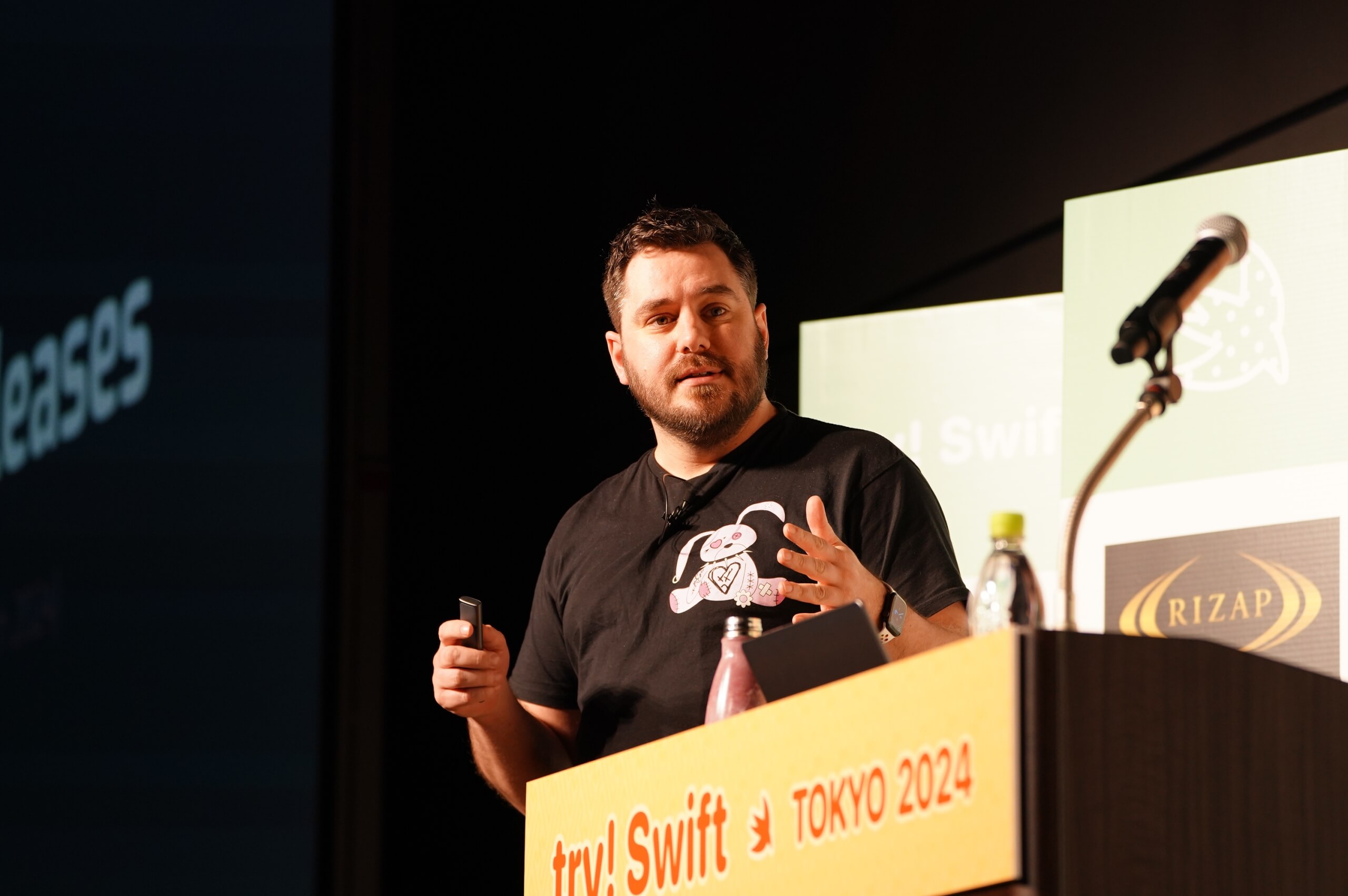
Vaporの仕掛け人、Tim Condon氏。シャツが良い感じ!
Swiftで書かれたAPIに合わせて、同じSwift言語を使ってWebページを実装してみることもできます。これはPaul Hudson氏のトークテーマでした。Swiftリザルトビルダーを利用したHTML生成に関するPaul氏の講演は、経験豊かな彼だからこそできるもので、とてもおもしろかったです。スピーチのクライマックスは、彼がスピーチで話していたのとまったく同じ原理を使った新しいサイトビルダー、Igniteの発表でした。

Paul Hudson氏: Igniteも含め多くのものを裏で支えている仕掛け人
このカテゴリーでもう一つ印象的だったのは、クロスプラットフォームSwiftをこよなく愛するSaleem Abdulrasool氏によるもので、WindowsとmacOSの違いと類似点、そしてSwift開発者がWindowsアプリケーションを作ろうとする際に直面する課題について話してくれました。
最後に忘れてはいけないのが、Yuta Saito氏によるSwiftのバイナリ削減ストラテジーについてです。一見、私が本記事で書いているトレンドとは関係無いように見えますが、齋藤さんがPlaydateという小さなゲーム機にデプロイされたシンプルなSwiftアプリを見せたときに、無関係ではないことに気づきました。感動的でした。
SwiftがAppleのプラットフォームで新しい機能を得るだけでなく、新しい領域も絶えず探求しているのは喜ばしいことです。
"ザ・コンピューター (パラノイア)"
最後に、ここ数年あちこちで話題となり、新しい「なによりも強力な」モデルが次々と出てくるAIやLLMなどのトピックについてお話します。デジタル・ゴールドラッシュの昨今、ソフトウェア企業はAI処理をありとあらゆるものに適用しようとしています。もちろん、Swiftコミュニティもその影響を受けずにはいられません。try! Swiftでも、この傾向が随所に見られました。
カンファレンスで最初に行われたプレゼンの一つは、DuolingoのエンジニアであるXingyu Wang氏によるものでした。OpenAIと共同で導入したロールプレイ機能について、AIを搭載したバックエンドの活用、AI生成にかかる時間を最適化するための挑戦、そしてそれを軽減するためにXingyu氏のチームが適用したソリューションについて語られました。全体的に前向きで、AIが秘める無限の可能性を明るいイメージで描かれていたのを覚えています。
一方で、カンファレンスの前に私が注目したのは、Emad Ghorbaninia氏による "AIがない未来を考える / What Can We Do Without AI in the Future?"のセッションです。どんな内容なのか、とても興味を持っていました。実際に聴講して、AIのさらなる発展に伴い、開発者として、そして人間として、私たちが今後直面するであろう課題について深く考えさせられました。Emad氏の考えによると人工知能に対抗するためには、人間が最もその強みを出せる創造的なプロセスに焦点を当てるべき、とのことでした。反論できません。
さいごに
try! Swift Tokyoでのディスカッションをふり返り、Swiftコミュニティの進化や最新の技術動向に適応していっている様子は非常に興味深いです。Apple Vision Proのような革新的なハードウェアを取り入れることから、サーバーサイドSwiftやAIの統合といった新たな領域の開拓まで、今回見えた進展は技術の動向に広く敏感に対応するコミュニティの姿勢を浮き彫りにしています。この好奇心とイノベーションへの情熱が、SwiftをiOS開発に限定された言語ではなく、ソフトウェアの可能性を広げるための強力なツールセットにしています。今後も、開発者の創造性と技術のダイナミックな相互作用はSwiftコミュニティ内でさらにエキサイティングな進歩をもたらすことが期待されます。この活気に満ちたエコシステムの一員となれることは非常に楽しみです!
関連記事 | Related Posts

Trying! Swift Community in 2024
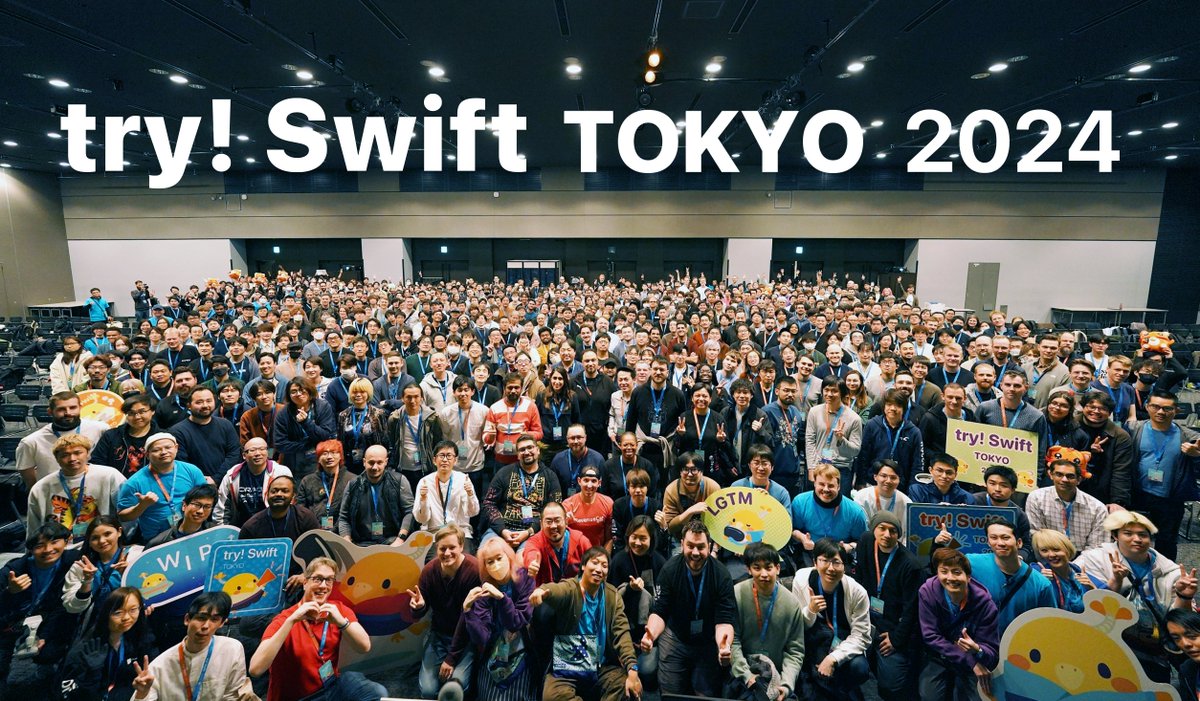
Recap of Try! Swift Tokyo 2024

#iwillblog: iOSDC Japan 2022 Participation Report
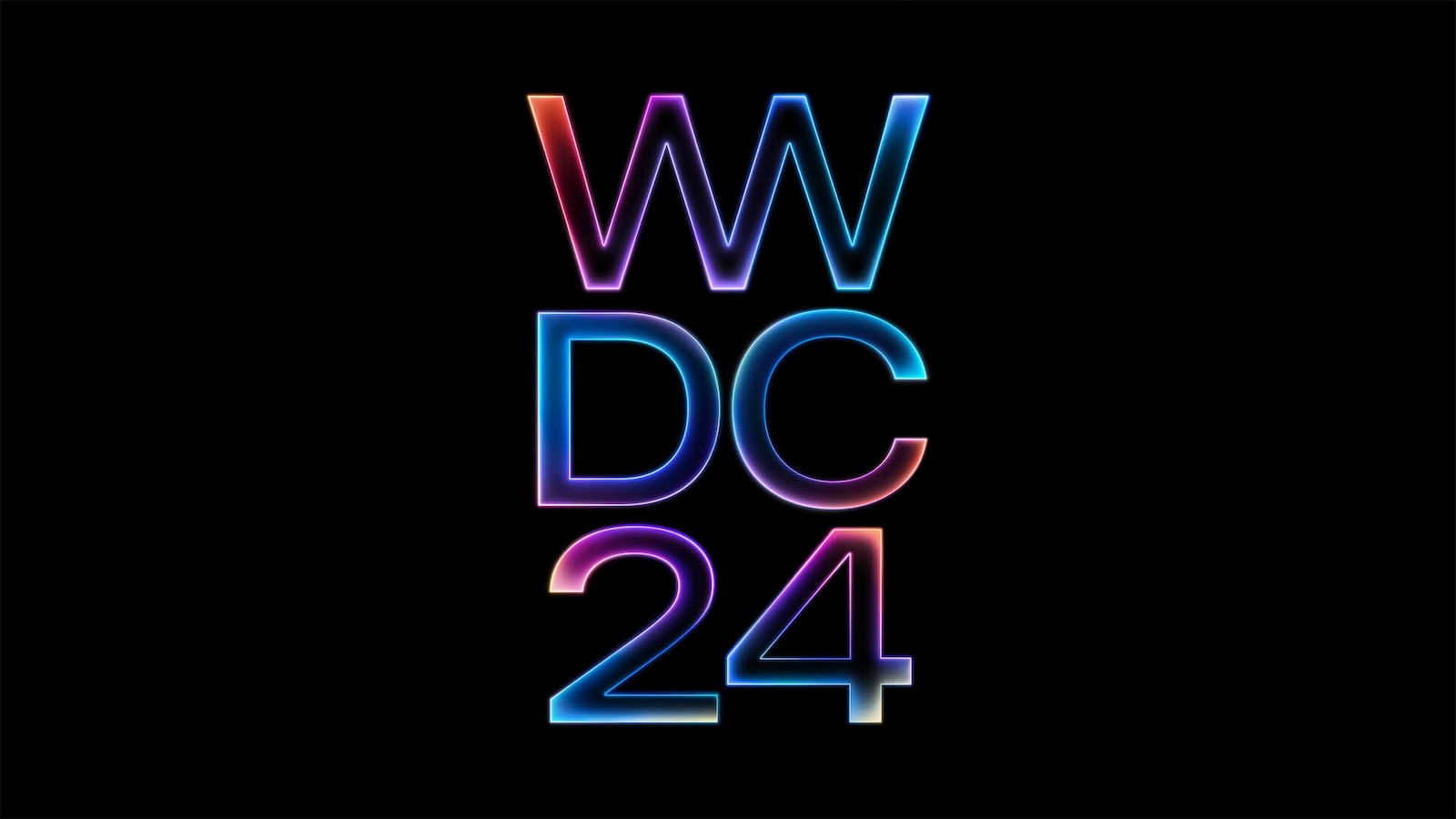
I Attended The Apple Worldwide Developers Conference (WWDC) in Person For the First Time
![Cover Image for [iOSDC Japan 2024] Retrospective by KINTO Technologies](/assets/blog/authors/nakaguchi/2024-09-dd-ktc-iosdc/top.jpg)
[iOSDC Japan 2024] Retrospective by KINTO Technologies
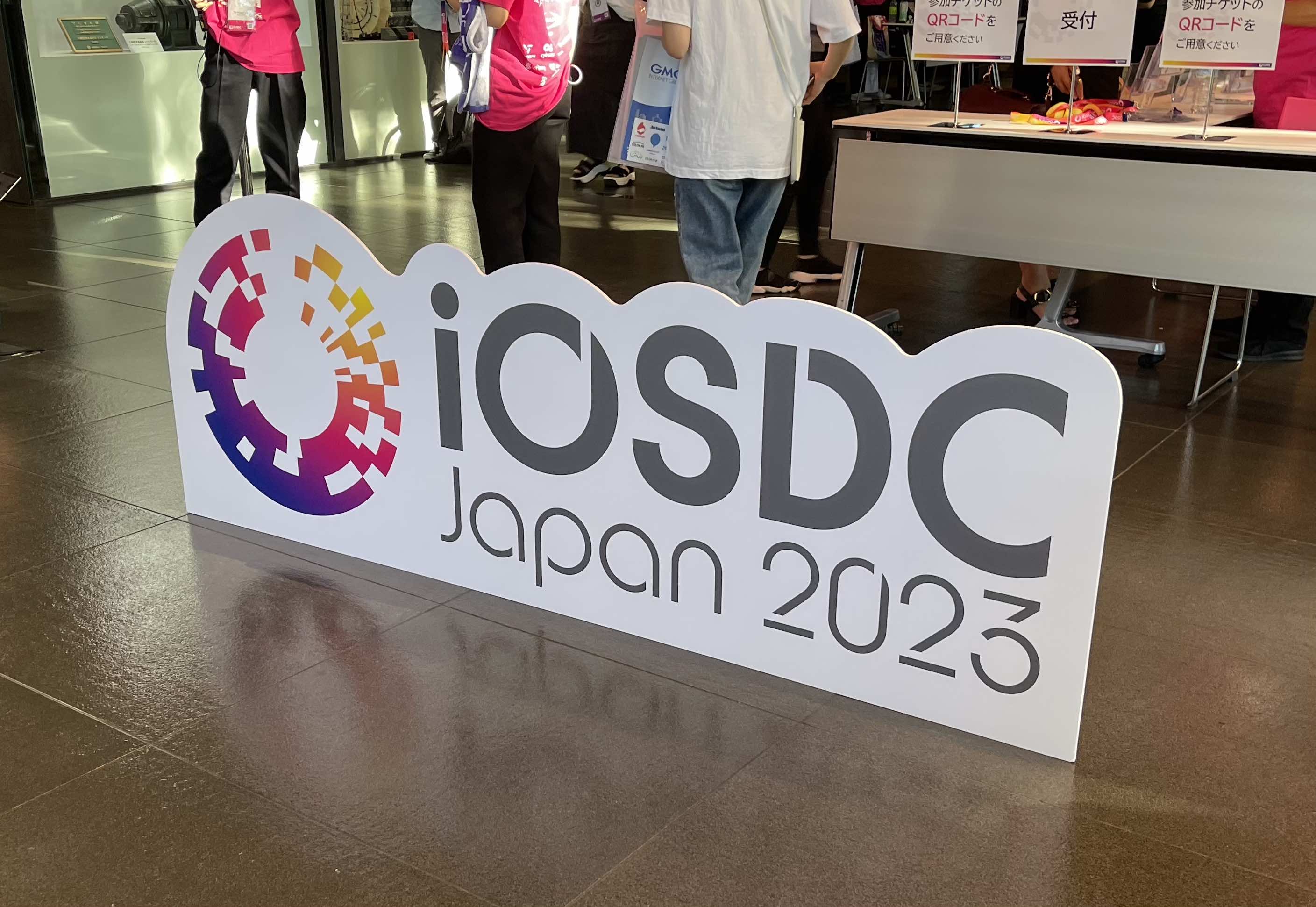
A Report (Engineer's Perspective) on Participation in iOSDC Japan 2023
We are hiring!
【クラウドエンジニア(クラウド活用の推進)】Cloud Infrastructure G/東京・大阪・福岡
KINTO Tech BlogCloud InfrastructureグループについてAWSを主としたクラウドインフラの設計、構築、運用を主に担当しています。
【プロジェクトマネージャー(iOS/Android/Flutter)】モバイルアプリ開発G/東京
モバイルアプリ開発GについてKINTOテクノロジーズにおける、モバイルアプリ開発のスペシャリストが集まっているグループです。KINTOやmy routeなどのサービスを開発・運用しているグループと協調しながら、品質の高いモバイルアプリを開発し、サービスの発展に貢献することを目標としています。
